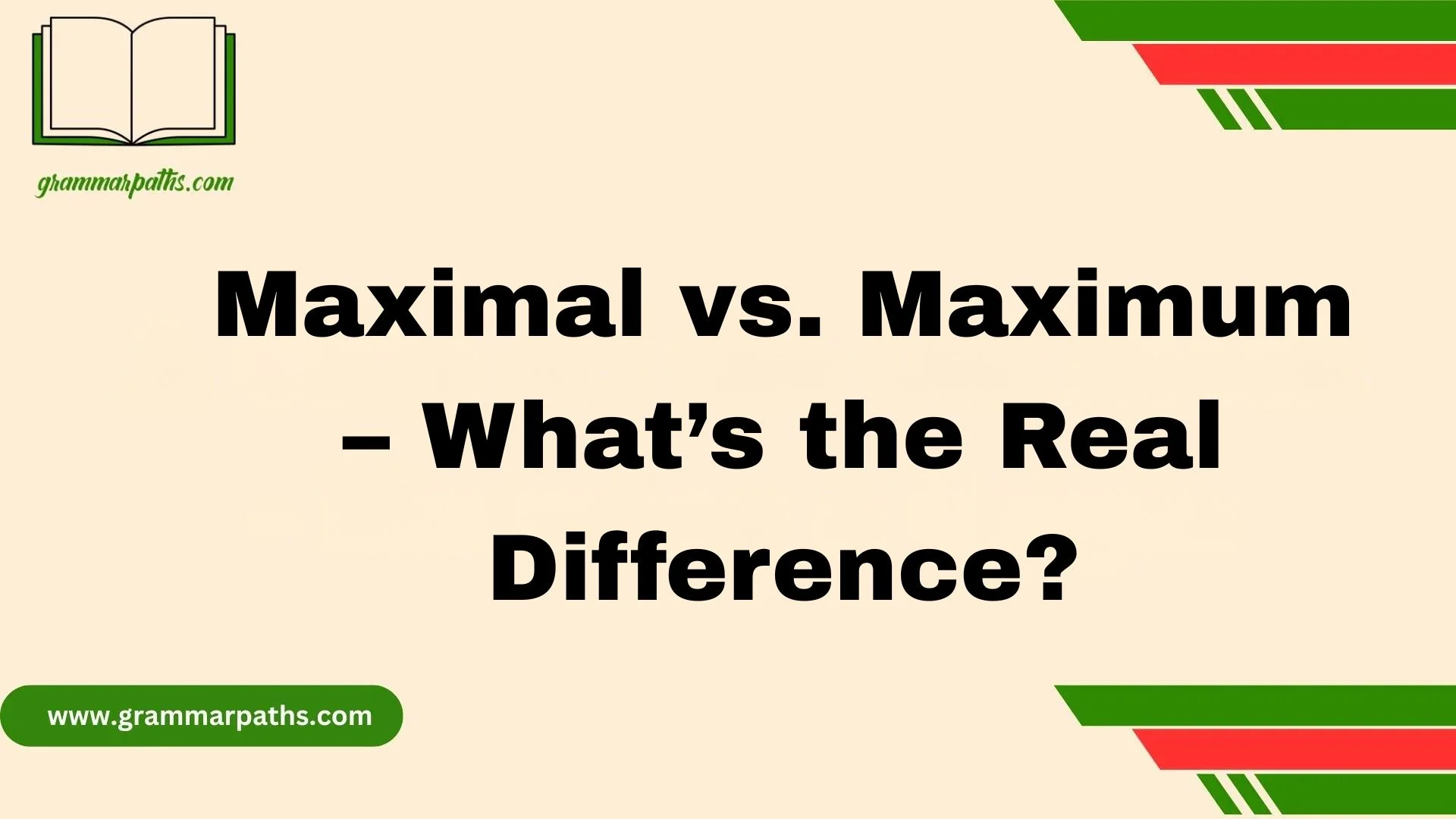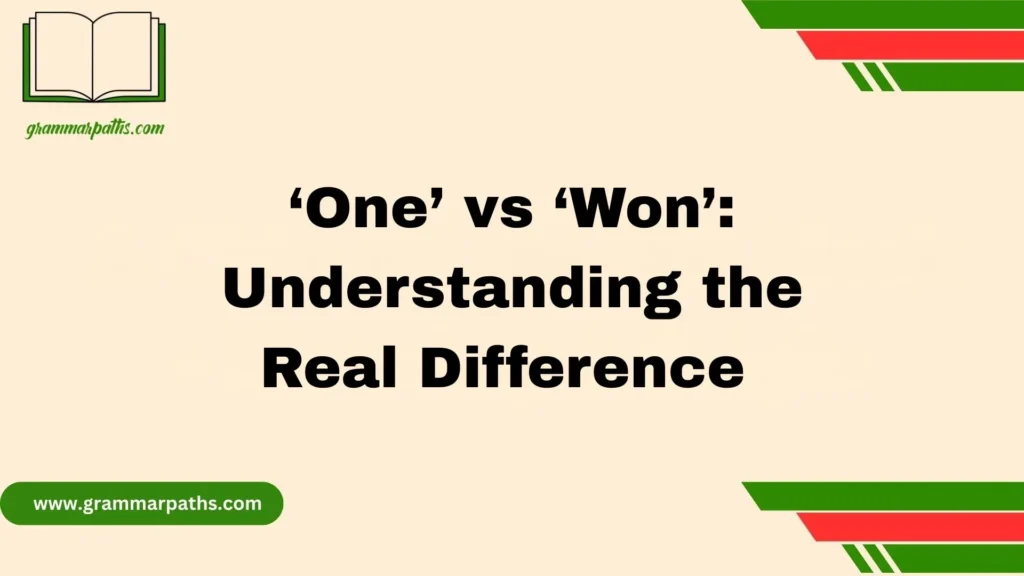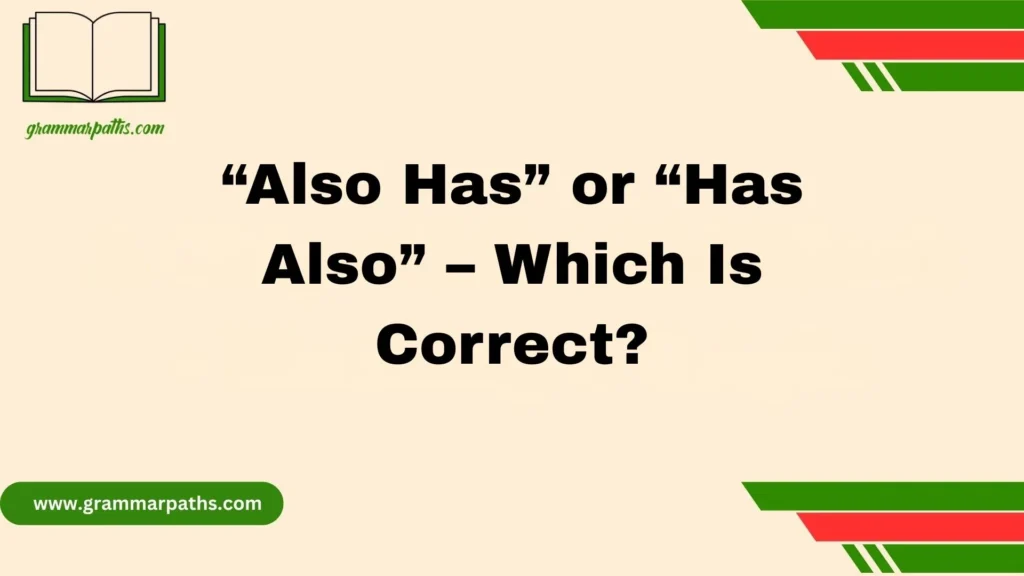In English, even the smallest detail matters, because what looks big and obvious under strict rules can hide small nuances. Each shade of meaning counts today when tackling this pair of terms. Like twins, they can confuse both seasoned speakers; maximal and maximum not only sound similar but also look alike, like cousins who are often treated as interchangeable in casual conversations and careless writing. That’s why this topic—Maximal vs. Maximum – What’s the Real Difference?—becomes a tricky puzzle. I used to worry and go back to compare meanings, studying uses, spotting subtle differences in every sentence of an article. Getting it exactly right mattered; I recall second-guessing yourself, telling yourself to think yet again before finalizing.
I’ve seen people often mix up maximal and maximum, treating them as the same when their different meanings point to very different roles. Maximum marks the highest amount, the level you can fully reach—the top limit. A classic example is a jar that can hold 10 cookies, the number it can fully contain, the largest extent or degree in that specific situation. By contrast, maximal relates to reaching a high point under given conditions. It doesn’t promise the absolute or ultimate best but the best possible outcome within constraints. For instance, if you run as fast as you can for 5 minutes, your speed at that time may be short of the ultimate ceiling or peak, but it’s still your maximal effort, bound by the body’s natural hitting limits.
In mathematics, this difference grows sharper. With complex problems in graph theory and optimization, both students and professionals risk misusing the terms. Even a minor slip can matter, since in mathematical computer science, trying to extend too far or breaking a rule can distort the value of a distinction. That’s why it’s crucial—mixing them can lead to wrong conclusions in a set, a formal proof, or a programming function. I once wrote an article using them interchangeably, and a peer gave me sharp feedback. That learning moment helped me refine my reasoning, built from years of teaching, where I had seen students often miss something, making simple yet absolutely vital errors. I especially still remember how being called out was a major push that helped me grow as one who values accuracy in technical explanation.
Introduction to Maximal vs. Maximum
Let’s start with the basics. In everyday speech, you’ve probably heard someone say:
- “He gave maximum effort.”
- “She took maximal precautions.”
At first glance, both sound correct, but they don’t always mean the same thing. Maximum refers to the highest possible value in a measurable sense, while maximal points to something that can’t be exceeded within a certain context but doesn’t have to be the single greatest overall.
Think of it like this:
- Maximum = the single top spot.
- Maximal = one of the top spots, depending on the framework.
Core Definitions
Maximum
- Definition: The greatest element in a set, the highest limit, or the utmost possible value.
- Mathematical Meaning: The element in a set that’s larger than or equal to every other element.
- Everyday Usage: “The maximum speed on this road is 65 mph.”
Maximal
- Definition: An element that isn’t exceeded by another element in its set, but there may be more than one.
- Mathematical Meaning: An element is maximal if nothing is strictly greater than it in a partial order.
- Everyday Usage: “She made maximal use of her free time.”
Quick analogy: Imagine a high school basketball team. The tallest player is the maximum. But if two players are tied for tallest, each one is maximal in height, even though there isn’t a single maximum.
Mathematical Foundations of Maximal and Maximum
Mathematics gives these words very specific meanings. Understanding these differences helps avoid confusion when reading textbooks, research papers, or technical material.
Maximum in Mathematics
- The maximum is the largest element in a set under a total order.
- Example: In the set {1, 3, 7, 9}, the maximum is 9.
- Functions can also have maximum values:
- If f(x) = –x², the maximum occurs at x = 0 where f(x) = 0.
Maximal in Mathematics
- A maximal element is one where no other element is strictly greater within the same ordering.
- Example: In the set {a, b, c} with a defined relation where a > b, but c is incomparable with a and b, both a and c can be maximal.
- In short: You can have multiple maximal elements but only one maximum element, if it exists.
Partial Orders vs. Total Orders
This is where the distinction between maximal and maximum becomes crucial.
Total Order
- Every element can be compared.
- Example: Real numbers. For any two numbers, one is greater, equal, or smaller.
- In total orders, if a maximum exists, it’s unique.
Partial Order
- Not every element can be compared.
- Example: The set of all subsets of {1, 2, 3} ordered by inclusion.
- Here, subsets {1,2} and {2,3} are maximal, but there is no single maximum subset.
Key Fact:
- Maximum = unique highest value in a total order.
- Maximal = can be multiple, applies in partial orders.
Real-World Applications of Maximal vs. Maximum
The concepts aren’t just academic. They show up in daily life, professional fields, and advanced science.
Everyday Life Examples
- Maximum:
- The maximum temperature today is 90°F.
- The store has a maximum capacity of 200 people.
- The maximum temperature today is 90°F.
- Maximal:
- He exercised with maximal intensity.
- She used the room’s space to maximal effect.
- He exercised with maximal intensity.
Professional & Academic Usage
In Statistics and Data Science:
- Maximum likelihood estimation (MLE) finds the maximum probability that a model explains data.
In Engineering:
- A bridge has a maximum load capacity (a number you can’t exceed).
In Philosophy and Logic:
- A maximal consistent set is a set of statements that is logically consistent and can’t be extended without becoming inconsistent.
In Computer Science:
- Maximal cliques in graph theory are subgroups of connected nodes that can’t grow larger without breaking their property.
Specialized Fields Breakdown
Graph Theory and Order Theory
In graph theory, a maximal clique is a complete subgraph that can’t be extended by adding another vertex. Importantly, it may not be the maximum clique (the largest such subgraph).
- Maximal Clique: Can’t be extended further, but not necessarily the largest.
- Maximum Clique: The largest clique in the graph.
This is why understanding the difference is critical in computer algorithms and data structures.
Calculus and Optimization
- A function has a maximum at points where it reaches its greatest value.
- Maximal values can exist in constrained optimization problems where several “locally maximal” points exist.
Example:
- For f(x) = cos(x), the maximum on [0, 2π] is 1 (at x = 0, 2π).
- But if you restrict the domain to subsets, multiple maximal values appear.
Higher Mathematics: Zorn’s Lemma
Zorn’s Lemma is a cornerstone of set theory and functional analysis. It states:
“If every chain in a partially ordered set has an upper bound, then the set contains at least one maximal element.”
This lemma doesn’t guarantee a maximum, only the existence of a maximal element. It’s fundamental in proving the existence of mathematical structures like bases in vector spaces.
Language and Usage in the USA
Outside math, the difference still matters, though most Americans use them interchangeably. Dictionaries provide guidance:
- Maximum (Merriam-Webster): Greatest quantity or value attainable.
- Maximal (Merriam-Webster): Being the greatest or most complete of its kind.
How Americans Use These Words
- Maximum dominates everyday usage. Examples: “Maximum speed,” “maximum security,” “maximum penalty.”
- Maximal shows up more in academic writing, scientific papers, and formal contexts. Examples: “Maximal oxygen uptake (VO₂ max),” “Maximal symmetry in physics.”
Common Misuse in the USA:
- People say “maximum effort” (correct) but rarely “maximal effort” (though also valid in certain contexts).
- Marketing often uses “maximum” because it feels stronger and clearer.
Common Misconceptions About Maximal vs. Maximum
- Misconception 1: Maximal always equals maximum.
- Wrong. A set can have multiple maximal elements but no maximum.
- Wrong. A set can have multiple maximal elements but no maximum.
- Misconception 2: Maximal is just a fancier synonym for maximum.
- Incorrect. They’re not interchangeable in technical contexts.
- Incorrect. They’re not interchangeable in technical contexts.
- Misconception 3: There can only be one maximal element.
- False. In partial orders, many elements may be maximal.
Comparison Table: Maximal vs. Maximum
| Feature | Maximum | Maximal |
| Definition | The single greatest element in a set | An element that can’t be exceeded but may not be the greatest |
| Mathematical Use | Highest value, unique if exists | Can be multiple, depends on order |
| Real-Life Use | Maximum speed, maximum load | Maximal effort, maximal precautions |
| Order Context | Total order | Partial order |
| Number Possible | Only one (if it exists) | Can be several |
| Example | Max temperature = 105°F | Maximal subsets in a set |
Case Study: VO₂ Max in Sports Science
Sports science gives a great real-world look at this difference. VO₂ max measures the maximum oxygen uptake an athlete can use during exercise. It’s the single greatest value for that person.
But sports medicine also refers to maximal effort tests, where the athlete pushes themselves until they can’t continue. Here, maximal means reaching a state that can’t be exceeded under current conditions, but not necessarily their absolute maximum.
This case study shows why scientists use both terms with care:
- Maximum = a measurable peak
- Maximal = a point where no further increase is possible in that situation
Conclusion
The terms maximal and maximum may look similar but they serve different purposes. Maximum refers to the highest amount or the absolute limit, while maximal shows the best possible within given constraints. Understanding these subtle differences is crucial for students, professionals, and anyone working with mathematics, logic, or precise communication.
FAQs
Q1: Why do people confuse maximal and maximum?
Because they sound and look alike, many speakers and students use them interchangeably, though their meanings are different.
Q2: Can you give a simple example of maximum?
Yes, if a jar can hold 10 cookies, that is the maximum—the largest extent it can contain.
Q3: What is a good example of maximal?
If you run as fast as possible for 5 minutes, your speed may not be the absolute best, but it is a maximal effort.
Q4: Why does this distinction matter in mathematics?
In mathematics, especially in graph theory and optimization, mixing the two leads to wrong conclusions in proofs or functions.
Q5: How can I avoid second-guessing myself?
Use clear definitions, check examples, and practice spotting the subtle differences in sentences and articles you read or write.

Mia Rose is the passionate writer and founder of GrammarPaths.com, a resource dedicated to helping learners master English grammar, idioms, and writing skills with ease. With a deep love for language and years of experience in teaching and content creation, Mia simplifies complex grammar rules into clear, practical guides that readers can instantly apply.












